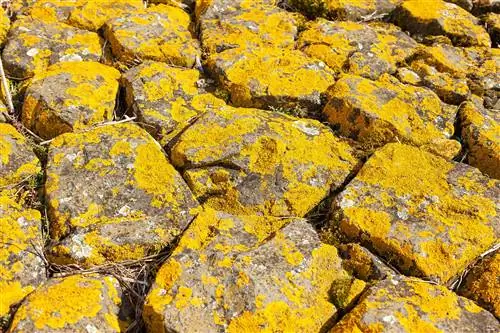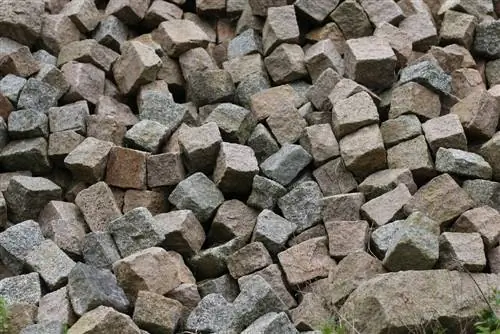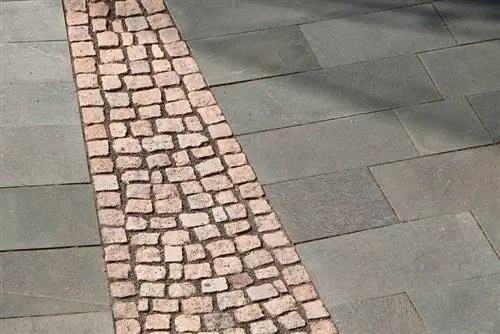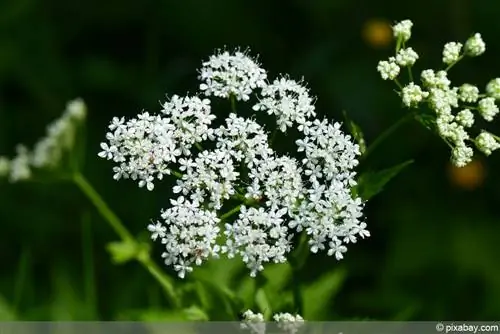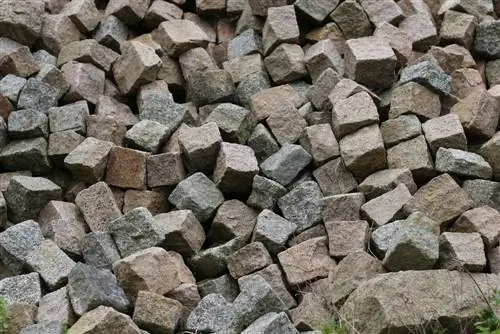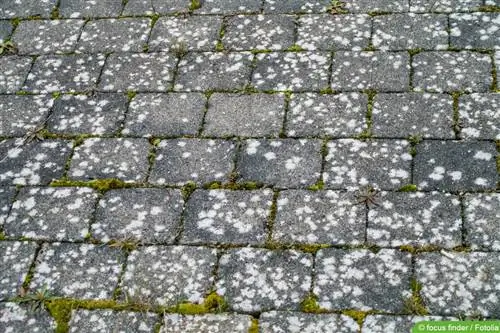- Author admin [email protected].
- Public 2023-12-17 03:39.
- Last modified 2025-01-24 12:45.
A lichen covering on paving stones not only looks unsightly, but also poses the risk of slipping. With the following tips you can easily and effectively remove the unloved roommates from your terrace and garden paths.
Short description of lichens
Lichens are symbiotic communities consisting of a fungus and one or more types of algae with the following distribution of tasks:
- Mushroom: Protection against harmful environmental conditions and for absorbing substances from the environment
- Algae: Formation of nutrients
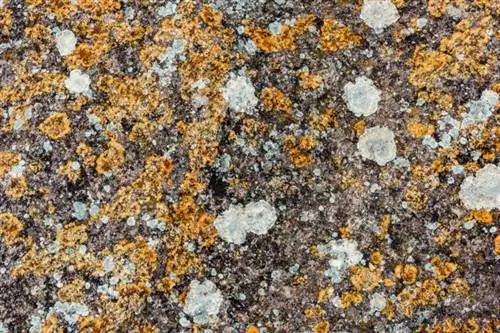
Probably the greatest weakness of lichens is the lack of roots, which is why they have to absorb the substances they need directly from the environment. This fact makes lichens susceptible to toxic substances in their environment.
Tip:
When it dries out, the upper and lower outer surfaces of the lichen harden to protect the algae. In this condition it is even more difficult to remove.
Methods
If lichen has already formed, it should be removed as early as possible. Depending on the degree of spread and the surface, different methods make sense.
Mechanical
If the lichen is limited to a small area, it is sufficient to remove it from the substrate with plenty of water and the following tools:
- a wire brush
- a mop
- a spatula
- a high-pressure cleaner
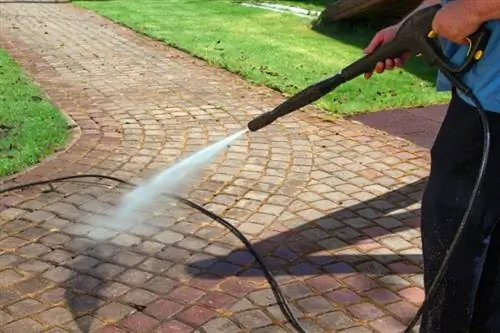
Since no other substances are required, this method is the most environmentally friendly. However, the effort required can be very high, which is why mechanical removal of lichen is not suitable for large areas or for sensitive or soft surfaces.
Chemical
Trade offers a variety of chemical lichen removers. These usually work very reliably and prevent recurrence for a certain period of time as they also kill the fungal spores.
The strength of the agent and its environmental impact can be estimated using the following warnings:
- “Harmful to the environment”
- “Corrosive”
- “Caution”
Since lichens are very resilient, these substances are usually very aggressive and also have an extremely negative effect on other plants. They are therefore hardly suitable for use in gardens with access to groundwater.
Home remedies
A tried and tested remedy is vinegar. If you put fruit or wine vinegar directly on the lichen and let it take effect, it kills the fungus. The lichen can then be separated from the stone with plenty of water and a hard broom or wire brush.
The effort required is significantly less than with purely mechanical removal.
Tip:
The use of vinegar is only permitted as a fungicide or bactericide. This method is prohibited in closed areas and near other plants, e.g. weeds in joints, and is therefore legally questionable.

Soda or baking soda are similar to vinegar in terms of use and effect. Dissolve 20 to 30 grams of the powder in boiling water. Spread the warm solution over the affected area and allow it to take effect. The lichen can then be removed with plenty of water and a hard broom or wire brush.
Repeat the application after one to two days. This will prevent any remnants of the lichen from remaining and spreading again.
Thermal
You can kill lichen almost completely with a weed burner. The heat first removes the water from the organism and then the organic components burn. Since the outer layer of the lichen hardens when water is removed in order to protect the algae inside from water loss, this process takes some time. Therefore, you have to work on the affected areas with the torch for a relatively long time, which can leave unsightly soot stains on the pavement.
Tip:
Harmful gases can be produced when burning. Therefore, cover your mouth and nose when doing this work and make sure that there are no children or animals nearby.
This method is particularly suitable for large-scale lichen infestations, e.g. in a newly acquired garden. Let the burner move slowly and evenly over the surface several times. This will prevent overheating and damage to the paving stones.
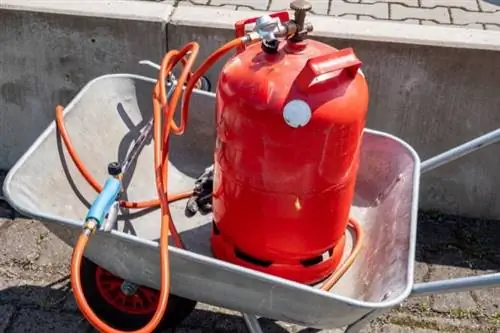
Note:
To permanently remove lichen, you also need to kill the spores of the fungus. However, since lichens grow very slowly, the methods mentioned work for at least one or two garden seasons. Newly forming lichens are very easy to remove mechanically.
Frequently asked questions
What promotes the growth of lichens?
Lichens absorb the substances they need directly from the air or form them through photosynthesis of the algae. Locations in nutrient-rich, clean environments with lots of sunlight and regular water supply are therefore ideal.
Are lichens harmful?
In principle, lichens are not harmful to humans, animals, plants or objects. However, some species contain fragrances or colors that can trigger allergic reactions if you are hypersensitive.
If a lichen spreads too much on a plant, it can affect bud formation. Some lichens are very firmly attached to the substrate and can cause minor damage over a long period of time.
How do you distinguish lichen from moss?
It is not always easy to tell whether the covering on paving stones is moss or lichen. The two can best be distinguished based on color, structure and location. Moss is green, soft and grows in moist, shady places. Lichens can have different colors, are harder than moss and also grow in sunny and dry places. However, this doesn't matter when removing the covering, as the methods also work against moss.
How can you prevent lichen in the garden?
The fungus of a lichen cannot survive without the algae component. Fungal spores spread through the air and therefore cannot be prevented. However, if you avoid algae in the garden, the risk of lichen formation is also reduced. You should therefore thoroughly clean ponds, pools and streams in the spring before filling them with fresh water. In very hot summers, regular treatment with algae remover makes sense. This also prevents the pond from tipping over and smelling unpleasant.

